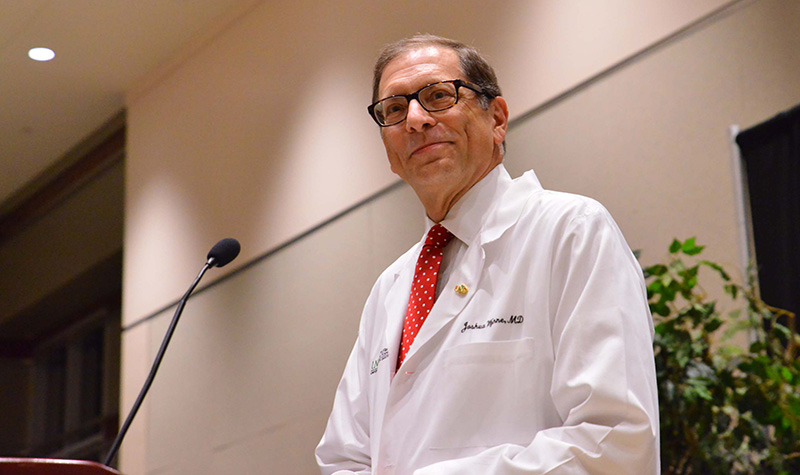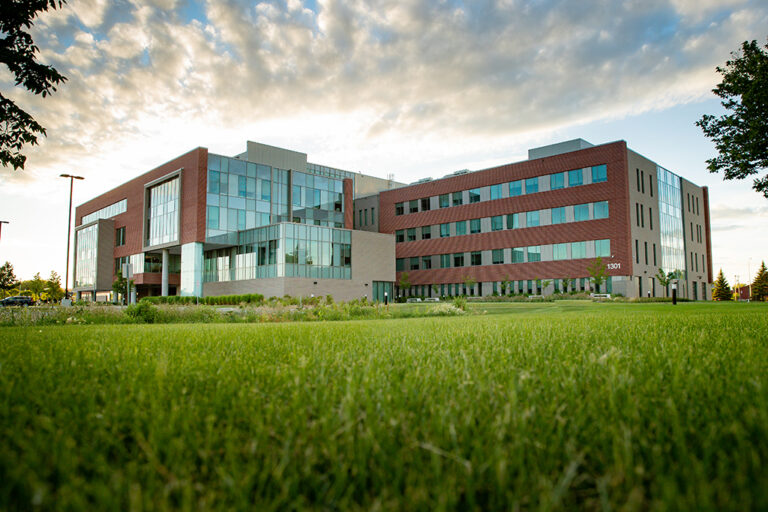From The Dean

This past Tuesday, I testified before the Interim Higher Education Committee of the North Dakota Legislature on behalf of the UND School of Medicine & Health Sciences Advisory Council. I’m the executive secretary of the Council, and ordinarily I’d testify along with Chair Dave Molmen, CEO of Altru Health System, but Dave was out of town on Altru business. My slides for the presentation are available here. As you may recall, the SMHS Advisory Council is a legislatively mandated group of stakeholders from around the state that oversees the strategic direction, programs and facilities of the School, and makes recommendations regarding the School’s efforts in addressing the health care needs of the state, including health care workforce. The Advisory Council, in conjunction with the School, also is responsible for producing a biennial report on the status of the health and health care delivery in North Dakota. The fifth edition of the Biennial Report: Health Issues for the State of North Dakota 2019 is nearing completion and will be distributed (and available online) in December, just before the start of the 66th Legislative Assembly in January 2019.
In my presentation, I reviewed the purpose of the School as defined in the North Dakota Century Code, which includes physician and other health provider education, discovery (research) and service to the people of North Dakota to improve the quality of their lives. Next, I discussed our eight degree programs, our financial status (stable for the current academic year), and issues of cost and student debt. We have endeavored to keep tuition low and student debt manageable, and believe that those are some of the reasons why more graduates are staying in North Dakota to practice and going into rural areas. In fact, I presented some national comparison data that showed that in the course of the past decade, we’ve gone from well below the national average to well above it as to the fraction of our graduating physician classes that end up practicing medicine within North Dakota.
I reviewed our highly regarded and emulated small-group learning programs; the Indians into Medicine (INMED) program; the Simulation Center and our mobile vans that bring simulation training to all four corners of the state; our focus on interprofessional, rural, and primary care; our service programs that touch every one of the 53 counties in the state; and our research programs that focus on diseases that are relevant to North Dakotans.
Next I reviewed the progress that we’ve made with our Healthcare Workforce Initiative (HWI) that focuses on reducing disease burden, retaining more graduates for practice in the state, training more health professionals, and improving the efficiency of our health care delivery system.
I gave the Committee a preview of the Fifth Biennial Report that has all updated data and information, and much expanded coverage of issues related to the state’s nursing and behavioral health workforce.
The last part of the presentation was a report card of sorts of how the School in doing in meeting its objectives. I used nationally compiled data that showed how well we are doing in terms of physician retention for practice in North Dakota (discussed above), and how well we do in terms of our graduating medical students in selecting primary and rural care for practice and family medicine for specialty choice (98th and 100th percentile).
I concluded with a preview of our legislative agenda for the upcoming session and emphasized three priorities: First, we hope to make a persuasive case for continued robust state funding of our HWI and other programs that are designed to help provide the needed health care workforce for the state and improve the quality of life for North Dakotans (as a sidelight to this priority, we also hope to continue to keep tuition as low as possible, as this helps remove financial barriers to rural and primary care practice). Second, we hope that we can secure funding so that merit increases can be provided to faculty and staff who demonstrate outstanding job performance (so that we can attract and retain the best faculty and staff members possible). We would also hope to give an increase to those employees who are at the lowest end of the salary scale, since they have the least disposable income and are most impacted by any increase in the cost of living. Third, we emphasized the importance of UND’s Grand Challenges as envisioned by UND President Mark Kennedy. There are five Grand Challenges, focusing on energy, unmanned aerial systems, rural communities, big data, and our entry, clinical and translational medicine. We hope to focus on studying the causes and treatment of opioid addiction and cancer; virtual medicine (where we use telemedicine and other web-based technologies to bring the clinic to the patient rather than the other way around); and the use of artificial intelligence and other computer-based approaches to analyze patient data much more robustly than we do now in an effort to anticipate rather than treat health problems.
The members of the Committee asked several insightful questions, and all in all, the presentation and discussion seemed to go very well. The presentation was a good preview to the upcoming meeting of the Legislature, which kicks off with an Organizational Session from Dec. 3 to Dec. 5, 2018, prior to the first day of the Legislature on Jan. 3, 2019. Gov. Burgum will be delivering the State of the State address on that day as well. The outcome of the session is vitally important to the School, since we derive a vitally important fraction of our operating expenses from the state. As I’ve discussed before, state support (appropriations plus a mill levy) constitute over a third of our budget. So what happens during this upcoming session really matters to the School—and to the people of North Dakota!
Joshua Wynne, MD, MBA, MPH
UND Vice President for Health Affairs
Dean, UND School of Medicine and Health Sciences



